Natural textures, imperfect finishes, and quiet simplicity are redefining how serene bathrooms are designed today. Wabi Sabi, rooted in Japanese aesthetics, celebrates authenticity, rustic beauty, and the peaceful charm of unfinished spaces. As homeowners move away from overly polished interiors, this calming philosophy offers a refreshing alternative that feels deeply personal and soothing. Focusing on organic materials, muted tones, and mindful decor, Wabi Sabi bathrooms provide a sanctuary from the fast pace of modern life. Learning how to bring this soulful style into a bathroom can create an environment that feels effortlessly relaxing, grounded, and beautifully real in everyday living.
Raw Stone Vessel Sinks

Natural imperfections become a striking centerpiece with raw stone vessel sinks. Each basin carries unique veining, textures, and organic shapes that define the Wabi Sabi spirit. Sourced from granite, marble, or river stones, these sinks introduce an earthy, grounded presence to bathroom spaces. Unlike polished alternatives, their unfinished surfaces highlight the beauty found in irregularity and age. They pair beautifully with rough-cut wood vanities, concrete countertops, and muted limewash walls, establishing a cohesive design narrative rooted in nature. Water stains and subtle weathering only enhance the authentic feel over time, encouraging an appreciation for aging gracefully. For best results, opt for a stone vessel with minimal sealing to retain the tactile experience of raw material. Combining functionality with artistry, raw stone sinks provide a sensory connection to the natural world, aligning effortlessly with the Wabi Sabi philosophy of understated beauty, simplicity, and acceptance of imperfection.
Weathered Wood Vanity Tables
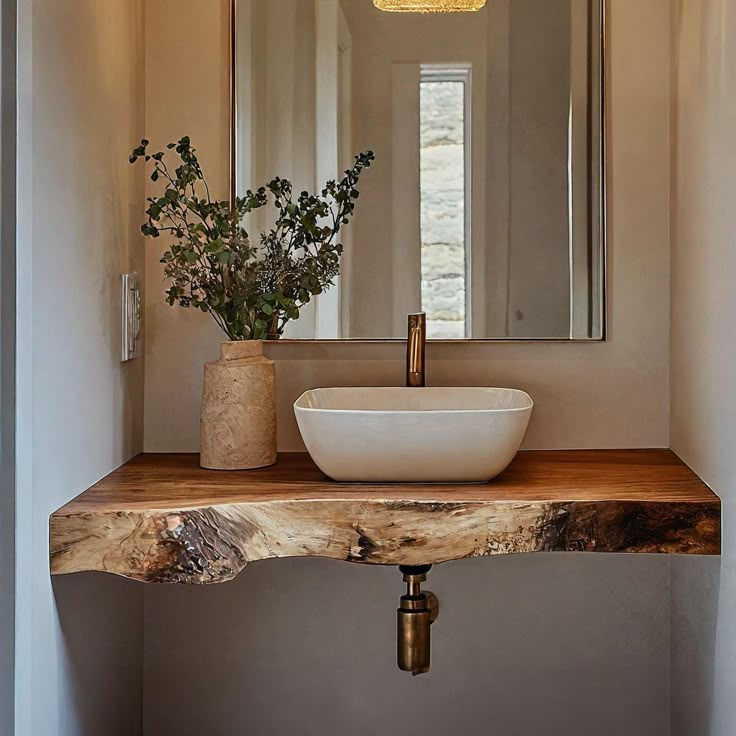
Timeworn wood surfaces offer a genuine connection to the Wabi Sabi aesthetic. Weathered wood vanity tables, with their cracks, knots, and softened edges, create a lived-in authenticity that cannot be manufactured. Whether reclaimed barnwood or naturally aged oak, the texture tells a story of resilience and endurance. Matte finishes and muted grains blend seamlessly with rustic vessel sinks and stone floor elements, emphasizing natural harmony over synthetic perfection. Handcrafted joinery and visible tool marks further enhance the artisan quality, making every piece feel personal and irreplaceable. Integrating a weathered wood vanity into the bathroom encourages a tactile experience and a visual softness that polished furniture lacks. Practicality also shines here: the durable, already-weathered surface shrugs off minor scratches and watermarks with elegance. Incorporating functional imperfection into the design invites a deeper appreciation for longevity, craftsmanship, and the timeless charm embedded in naturally worn materials.
Cracked Glaze Ceramic Tiles
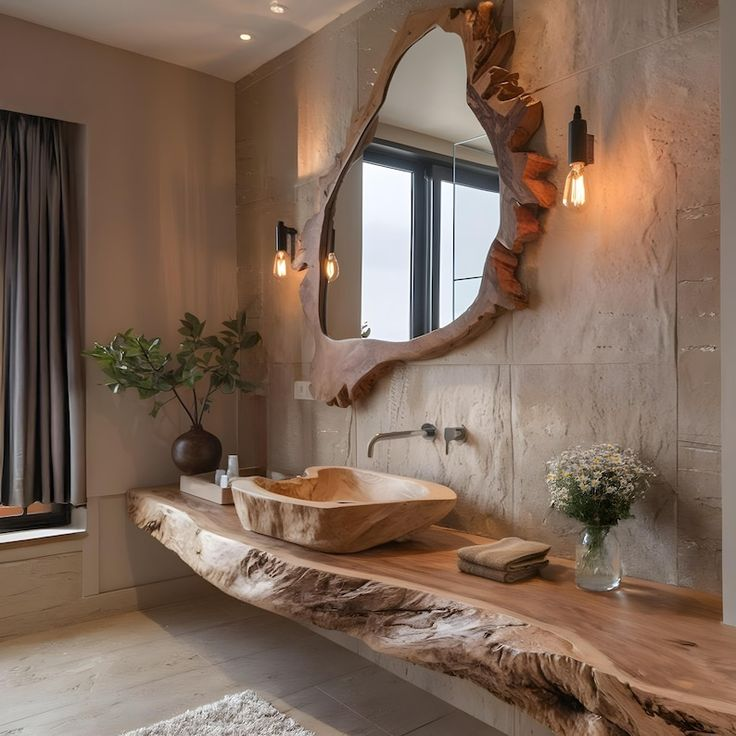
Hairline fractures across ceramic surfaces embody beauty in vulnerability. Cracked glaze ceramic tiles introduce this delicate balance, offering visual depth through their unpredictable patterns. Each tile showcases a network of tiny cracks formed during the cooling process, symbolizing fragility and resilience—a cornerstone of Wabi Sabi thinking. Soft whites, muted greens, and weathered blues work especially well, producing a soothing, organic backdrop. When installed thoughtfully, the subtle crackling enhances light diffusion, adding dimension to walls or flooring without feeling chaotic. Rather than appearing damaged, cracked glaze tiles offer a sense of honesty, revealing material behavior rather than masking it. Their gently worn look integrates beautifully alongside rough-hewn woods, stone elements, and plaster finishes. Choosing these ceramics helps move away from sterile perfection, embracing lived-in beauty. Maintenance is simple too; regular cleaning with gentle soap ensures longevity while allowing the material’s natural aging process to continue gracefully over time.
Organic-Shaped Wall Mirrors

Perfect symmetry gives way to soft, flowing forms with organic-shaped wall mirrors. These mirrors break the rigidity often seen in conventional design, introducing a fluid, serene energy ideal for Wabi Sabi bathrooms. Irregular edges, hand-forged frames, and asymmetrical silhouettes reflect the imperfect beauty of nature. Placed thoughtfully above stone sinks or weathered vanities, these mirrors avoid harsh lines, encouraging visual ease and a sense of relaxation. Material choices like antiqued brass, reclaimed wood, or patinaed metal for frames further amplify the aged, storied aesthetic. Organic mirrors not only serve a practical role but also act as sculptural art, adding softness to utilitarian spaces. The absence of formal structure promotes visual breathing room, allowing other earthy textures to shine. Over time, slight tarnishing or minor scratches enhance the character rather than detract. An organic mirror fosters a subtle, enduring elegance where authenticity and emotional resonance triumph over sterile precision.
Hand-Poured Concrete Floors
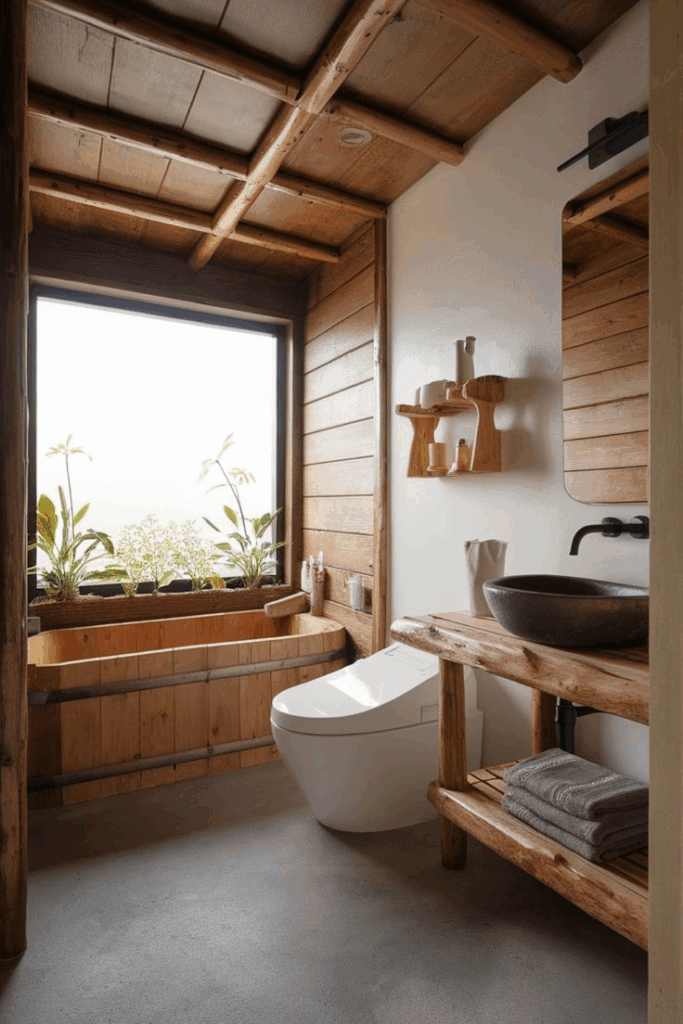
Earthy and unpretentious, hand-poured concrete floors ground the bathroom in Wabi Sabi’s core principles. Variations in color, minor inconsistencies in texture, and hairline surface marks tell an evolving story of time and use. Unlike polished, machine-finished concrete, hand-poured styles retain a tactile rawness that feels inherently connected to natural processes. Pale gray, taupe, or soft beige tones work best, harmonizing effortlessly with stone sinks, weathered woods, and linen textiles. Their subtle matte surface absorbs and softens light, avoiding harsh glares while promoting tranquility. Sealing the floor lightly can protect against excess staining while allowing the surface to age gracefully, developing a unique patina over years. Concrete’s thermal mass properties offer additional benefits, helping stabilize room temperature when paired with radiant heat systems. Thoughtfully integrated into bathroom spaces, these humble yet resilient floors prioritize authenticity, allowing design imperfections to evolve into prized features rather than flaws to be hidden.
Minimalist Open Shelving with Patina
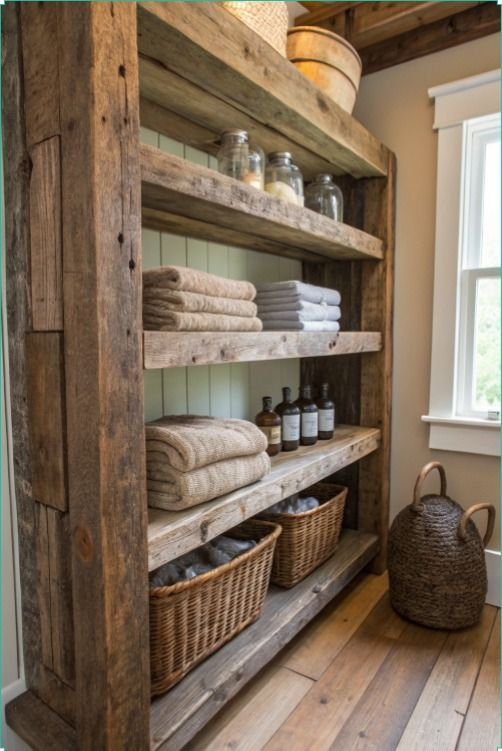
Simple open shelving showcases Wabi Sabi’s reverence for utility and beauty in imperfection. When aged woods or oxidized metals form the shelving base, the result feels organic and deeply personal. Patinaed surfaces—with visible knots, rust, or discoloration—add character without overwhelming the space. These open displays invite careful curation, where handcrafted pottery, weathered baskets, and linen towels find natural homes. Shunning clutter and embracing intentional simplicity, the shelving quietly honors the passage of time through worn materials and hand-touched textures. Natural oils or matte sealants can protect surfaces while maintaining the authentic look, encouraging long-term aging rather than constant upkeep. Strategic placement above vanities or near bathtubs allows functionality to align with aesthetic goals. Practical, unpolished, and human-scaled, open patina shelving transforms basic storage into an artful display. It nurtures an environment where restraint, mindfulness, and appreciation for the “unfinished” enrich daily bathroom rituals without striving for sterile perfection.
Muted Earth-Tone Limewash Walls
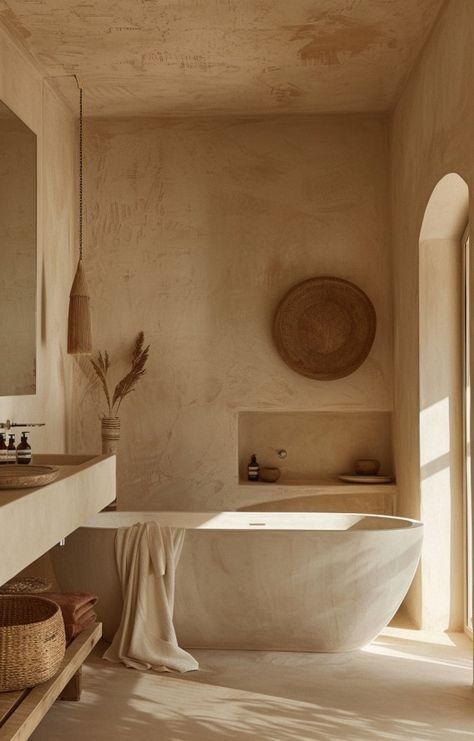
Soft, muted limewash walls offer a tactile, organic backdrop that defines a Wabi Sabi bathroom. The natural pigments and hand-applied layers create an imperfect, cloud-like texture, showcasing movement and subtle color shifts. Earth tones like sage, clay, sand, and stone gray blend effortlessly with other raw elements like stone basins and wood vanities. Unlike flat paint, limewash responds to the environment, gaining character as light and humidity shift throughout the day. Its breathable, mineral-based composition prevents trapped moisture, making it ideal for bathrooms. Over time, the surface may weather slightly or develop areas of richer color, reinforcing the charm of imperfection. Pairing limewash with natural fibers, raw wood, and hand-formed pottery crafts a layered, calming space rooted deeply in authenticity. Maintenance remains minimal—occasional touch-ups or refreshed coats are enough. By accepting gradual aging, limewashed walls allow a bathroom to evolve gracefully, becoming even more beautiful over the years.
Sun-Faded Linen Shower Curtains
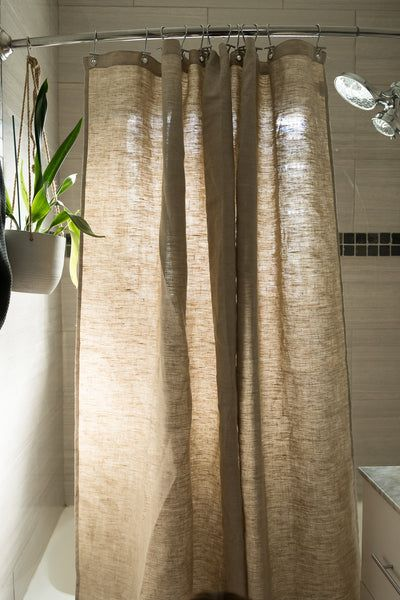
Washed linen shower curtains bring effortless softness and timeworn beauty into Wabi Sabi bathrooms. Unlike synthetic fabrics, linen wrinkles and fades naturally, enhancing its character with each wash and use. Lightweight yet durable, linen curtains diffuse light gently, casting a serene, relaxed mood throughout the space. Earthy neutrals such as oatmeal, ivory, and dusty gray integrate seamlessly with raw materials like concrete, stone, and reclaimed wood. Hung on rustic rods or antique hooks, these curtains feel intentional yet unforced, reflecting a commitment to authenticity rather than perfection. Choosing pre-washed or vintage-finish linen speeds the aging process, offering immediate texture and warmth. Even small frays or faded seams contribute to their appeal, showcasing life lived rather than sanitized showroom perfection. Beyond aesthetics, linen’s natural antibacterial properties and breathability make it practical for humid environments. A sun-faded linen curtain not only completes the look but anchors the bathroom’s emotional resonance in time.
Rough-Hewn Wooden Beam Towel Bars

Repurposed wooden beams find new life as towel bars, embodying Wabi Sabi’s principles of resourcefulness and raw beauty. The irregular surfaces, visible grain, and aged patina introduce authenticity that mass-produced fixtures cannot replicate. Mounted simply with wrought iron brackets or minimal supports, these rugged pieces bring organic warmth to stone, plaster, and concrete environments. Wood’s tactile nature encourages interaction, making daily rituals feel grounded and connected to natural elements. Selecting beams with visible knots, weather cracks, or soft weathered tones amplifies the visual narrative without overwhelming the space. Finishing them lightly with natural oils rather than lacquer preserves the texture and supports gradual, graceful aging. Placing rough-hewn towel bars near sinks, bathtubs, or showers adds quiet functionality while enhancing the bathroom’s lived-in soul. Their imperfect strength reminds users daily that beauty often resides not in flawless surfaces, but in materials shaped by time, weather, and human hands.
Rustic Clay Soap Dispensers

Simple, handmade clay soap dispensers introduce an earthy, grounded charm essential to a Wabi Sabi bathroom. Shaped with intentional irregularities, these dispensers carry the fingerprints of artisans, highlighting individuality rather than uniformity. The muted, matte finishes—whether natural terracotta, soft ash gray, or creamy beige—harmonize naturally with stone sinks, weathered woods, and limewashed walls. Subtle inconsistencies in color or shape are embraced, as each piece evolves over time with use. Minor chips, surface stains, or variations in texture add to the authenticity, reminding users of the object’s organic origin. Opting for locally made or small-batch ceramics enhances the personal connection and supports traditional craftsmanship. Functionality remains strong, with durable glaze interiors preserving hygiene while the exteriors celebrate imperfection. Placing a rustic clay soap dispenser beside a raw stone sink invites daily interaction with materials that honor both utility and soul, creating small but significant rituals rooted in mindful beauty.
Uneven Plaster Wall Finishes
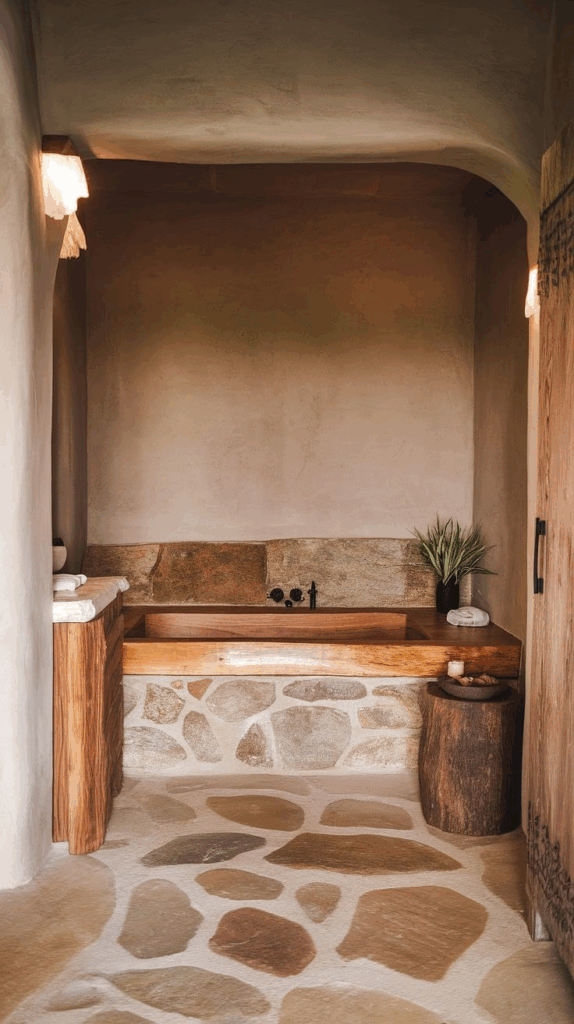
Gently undulating plaster walls add soft depth and tactile richness to a Wabi Sabi-inspired bathroom. Unlike machine-perfect drywall, hand-troweled plaster showcases tool marks, minor bumps, and subtle tonal variations that evoke the natural world. This centuries-old technique, using lime-based or natural clay plasters, produces a living surface that breathes, shifts, and gracefully wears over time. Pale neutrals—dusty whites, taupes, and soft beiges—support a soothing palette that highlights raw wood, stone basins, and artisanal pottery. Small imperfections, from hairline cracks to subtle color shifts, are celebrated as signs of authenticity rather than flaws needing correction. Maintenance remains minimal, often requiring only occasional patching or resealing. Paired with organic shapes and tactile materials, uneven plaster walls transform ordinary bathrooms into sanctuaries of imperfection and serenity. In embracing the unpredictable beauty of handmade craftsmanship, these surfaces nurture an environment where flaws foster intimacy and time deepens, rather than diminishes, their allure.
Pebble or River Rock Shower Bases
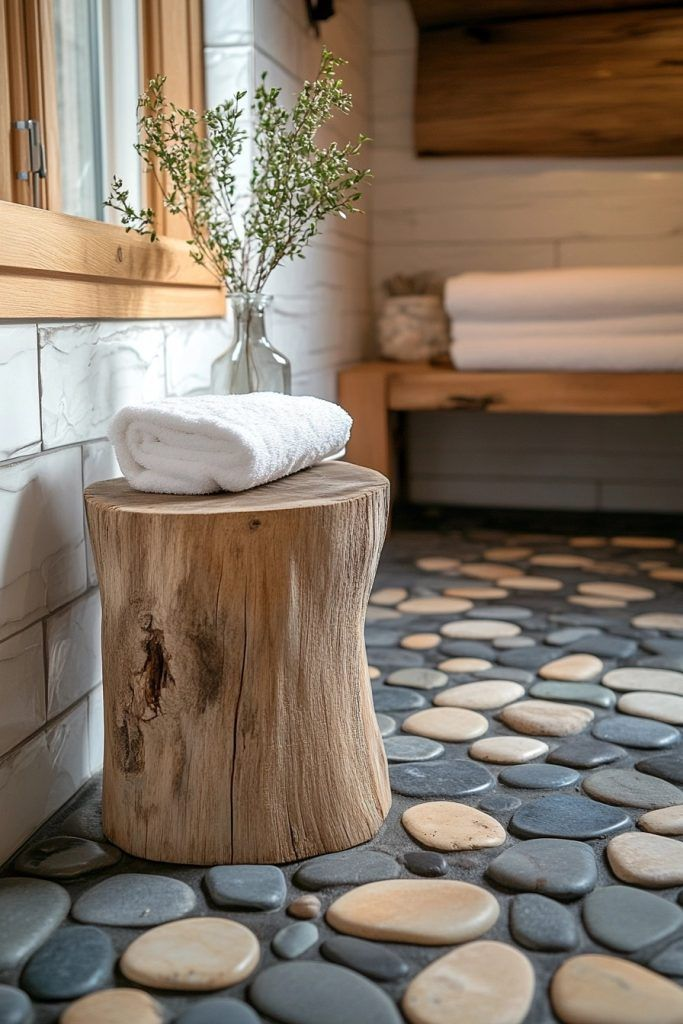
Underfoot textures become part of the sensory experience with pebble and river rock shower bases. Each stone—whether smoothed by river currents or tumbled naturally—feels uniquely grounded, anchoring the space in nature’s timeless rhythms. The irregularity of the surface offers gentle massage-like sensations while bathing, promoting relaxation beyond visual aesthetics. Natural color palettes featuring soft grays, earthy browns, and muted creams complement other Wabi Sabi elements such as raw concrete floors and weathered wood vanities. Grouting stones closely maintains water flow while allowing the stones’ individuality to shine. Over time, minor discolorations or surface wear only enhance the organic appeal. Proper sealing ensures durability without compromising authenticity. Installing a pebble shower base transforms everyday routines into grounding rituals, connecting users directly to earth elements. Each step across uneven stones becomes a reminder that imperfection, natural aging, and asymmetry are not defects but essential characteristics of truly beautiful spaces.
Soft Ambient Sconce Lighting
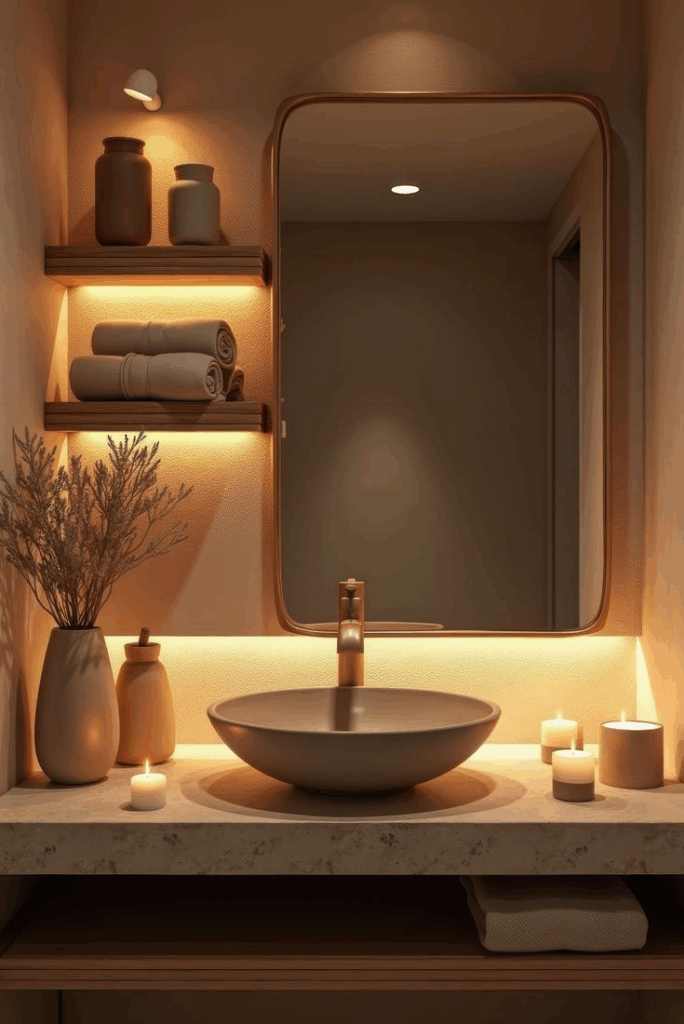
Gentle, indirect lighting nurtures the meditative atmosphere central to a Wabi Sabi bathroom. Ambient sconces, especially those with handblown glass shades, weathered metals, or raw ceramic bases, cast soothing pools of light rather than harsh glare. Placement matters greatly: mounting sconces near mirrors or above bathtubs allows for warm illumination that highlights textured walls, raw wood, and stone surfaces. Choosing muted bulbs with lower color temperatures—between 2200K and 2700K—enhances the cozy, lived-in feeling without introducing modern harshness. Subtle variations in material texture or finish, such as patina or glaze drips, reinforce the commitment to imperfection. Instead of spotlighting flaws, ambient lighting invites a deeper appreciation of subtle beauty, casting minor irregularities in a flattering, almost ethereal glow. Dimmer switches provide flexibility to adjust moods, encouraging slower, mindful experiences. Thoughtfully selected sconces serve as both functional lighting and atmospheric anchors, enriching the bathroom’s emotional and sensory dimensions naturally.
Bamboo and Rattan Accent Pieces
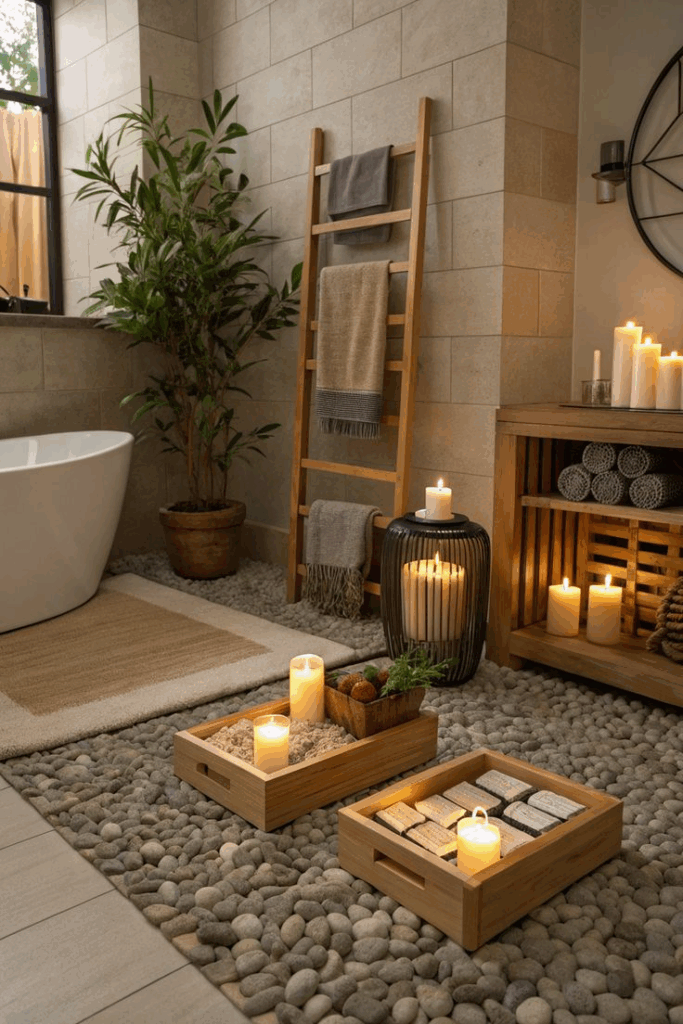
Natural fibers introduce softness and rhythm into the Wabi Sabi bathroom through bamboo and rattan accents. Woven baskets, lightweight stools, or rattan mirrors contribute a gentle visual movement without overwhelming simplicity. Their handwoven nature—featuring slight irregularities, frayed edges, or tonal variations—celebrates traditional craftsmanship over machine perfection. Bamboo’s strength and flexibility make it ideal for small shelves, towel ladders, or lightweight screens, blending seamlessly with stone, plaster, and weathered woods. Over time, sun exposure and humidity gently shift the fibers’ tones, enriching their natural patina. These materials require minimal maintenance; a simple wipe-down keeps their organic charm intact. Integrating bamboo and rattan pieces strengthens the sense of authenticity and temporality that defines Wabi Sabi spaces. Their airy forms and neutral palettes offer contrast against solid stone and dense woods, striking a vital balance between softness and grounding. In these accents, age, imperfection, and simplicity find harmonious, enduring expression.
Artisanal Imperfect Pottery Decor

Hand-thrown pottery pieces enrich Wabi Sabi bathrooms with their sincere imperfection and grounded beauty. Each vessel, bowl, or planter—formed by human hands—carries unique asymmetries, subtle glazing flaws, and organic profiles. Soft earthy glazes like ash white, clay gray, or moss green amplify natural textures, harmonizing with limewashed walls, stone basins, and raw wood accents. Displaying artisanal pottery on open shelves or vanities adds emotional resonance, showcasing objects that bear the marks of their making rather than hiding them. Minor chips, glaze pooling, and surface irregularities are celebrated, deepening their story over time. Local artisans and small-batch studios often produce the most compelling pieces, ensuring authenticity while supporting sustainable craftsmanship. Whether holding dried florals, soaps, or simply standing as sculptural forms, imperfect pottery deepens the lived-in soul of a bathroom. Its beauty emerges not despite flaws but precisely because each imperfection is a quiet, humble celebration of life’s transient nature.
